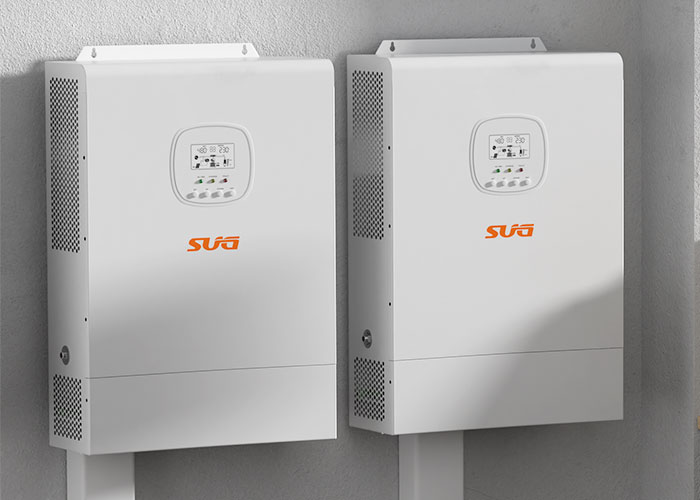The following are the main differences between Pure Sine Wave Inverter and Off Grid Hybrid Inverter:

Waveform Quality
Pure Sine Wave Inverter: It outputs a perfect pure sine wave alternating current, which is almost exactly the same as the mains waveform without distortion. It can provide a high-quality and stable power supply for loads and is suitable for equipment that has strict requirements on the power waveform, such as precision instruments, audio and video equipment, etc.
Off Grid Hybrid Inverter: Under normal circumstances, it also outputs a pure sine wave. However, in some complex working conditions, such as when the battery power is extremely low or there is a sudden change in the load, the output waveform may have a slight distortion. But usually, it can still meet the normal operation requirements of most conventional loads.
Voltage Stability
Pure Sine Wave Inverter: When the load changes, it can maintain the stability of the output voltage relatively well, and the fluctuation range is usually within ±5% of the rated voltage.
Off Grid Hybrid Inverter: The output voltage stability is also good, but in some special situations like during the switching process between different power sources (such as from grid power to battery power or vice versa), there may be a short-term voltage fluctuation that is slightly larger than that of the pure sine wave inverter, though it generally quickly returns to a stable state.
Pure Sine Wave Inverter: Its working mode is relatively simple. It mainly converts direct current (DC) into alternating current (AC) to supply power to AC loads. It usually needs to be connected to a battery pack or other DC power sources to convert DC electrical energy into AC electrical energy to meet the power consumption requirements of the loads.
Off Grid Hybrid Inverter: It has multiple working modes. Besides converting DC into AC, it can also realize functions like AC charging, DC charging, and grid-battery complementary power supply. When there is grid power available, it can automatically switch to the grid power supply mode and charge the battery pack simultaneously. When the grid power fails, it can quickly switch to the inverter mode and use the electrical energy in the battery pack to supply power to the loads.
Pure Sine Wave Inverter: It is applicable to various occasions where a stable AC power supply is needed, especially in places with extremely high requirements for power quality, such as households, offices, laboratories, etc. It can provide a pure AC power supply for all kinds of electronic equipment to ensure their normal operation and service life.
Off Grid Hybrid Inverter: It is mainly used in areas that are off-grid or have unstable grid power, such as remote mountainous areas, islands, construction sites, etc. It can cooperate with renewable energy generation equipment like solar panels and wind generators to achieve self-sufficiency and efficient utilization of energy.
Pure Sine Wave Inverter: The system configuration is relatively simple. Usually, it only needs to be connected to a battery pack and AC loads. In some small applications, such as in cars or RVs, just an inverter and a set of batteries can meet the basic power consumption needs.
Off Grid Hybrid Inverter: The system configuration is more complex. Besides the inverter and battery pack, it also needs to be equipped with a solar controller, charger, grid switching switch and other equipment. These devices need to work together to achieve the stable operation and efficient management of the system.

Pure Sine Wave Inverter: It has a relatively low cost and is more affordable. Its conversion efficiency is usually between 80% and 95%. The specific efficiency depends on the power size of the inverter and the load conditions. In the case of light load, its conversion efficiency may decline, but within the normal load range, its efficiency is relatively high.
Off Grid Hybrid Inverter: Due to its complex functions and rich system configuration, it has a relatively high cost. Its conversion efficiency is generally between 85% and 98%. When used in conjunction with renewable energy generation equipment, it can further improve the overall efficiency of the system through optimized control strategies.
GET A QUOTE